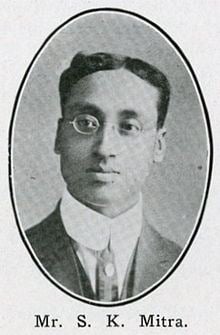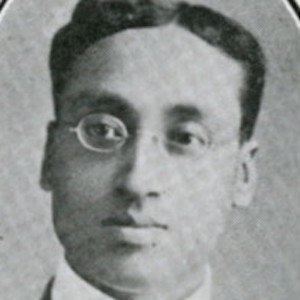Nationality Indian Died August 13, 1963 Fields Physics | Name Sisir Mitra Role Physicist | |
 | ||
Born 24 October 1890Kolkata ( 1890-10-24 ) Institutions Bankura Christian CollegeUniversity of ParisUniversity of NancyUniversity of CalcuttaWest Bengal Board of Secondary Education Alma mater Presidency CollegeUniversity Science CollegeUniversity of Paris Education | ||
Sisir Kumar Mitra (or Shishirkumar Mitra) MBE, FNA, FRS (October 24, 1890 – August 13, 1963) was an Indian Bengali physicist.
Contents

Education
Mitra was born and raised in Calcutta. His parents were the doctor Saratkumari and the school teacher Jaykrishna. At the age of nine he witnessed a hot air balloon and became intrigued in the phenomenon, so he began studying science. The family moved to Bhagalpur, where Sisir attended school and the local college. After his father died, his mother supported him through Presidency College of the University of Calcutta where he earned a B.Sc. In 1912 he gained his M.Sc. at the same institution.
Career
Mitra briefly became a scholar performing research before becoming a teacher. Eventually he taught at Bankura Christian College. In 1914 he married Lilavati Devi.
In 1916, Sisir was invited to join the new postgraduate department of physics at the University Science College. He gained a D.Sc. degree in 1919; then he left for Paris, France to study at the University of Paris. There he earned a second D.Sc. and would join Marie Curie at her laboratory. He developed an interest in the new science of radio communication, and went to the University of Nancy to research this field.
In 1923 he returned to India where he was appointed Khaira Professor of physics, at the University of Calcutta. There, in addition to teaching, he established a laboratory to investigate wireless. He also initiated a new department at the University of Calcutta that later became the Institute of Radio Physics and Electronics.
In 1955 he retired from the university, becoming emeritus professor. He was given charge of the West Bengal Secondary Education Board, and spent six years organizing this administrative body.
He died following a short illness.
Among his accomplishments were his investigations into the ionosphere. Dr. Mitra proposed that ultraviolet light from the sun created the middle, or E layer, of the ionosphere. He also determined that ions in the ionosphere's F layer were what caused luminescence of the night sky, giving it a dusty hue rather than pitch black. In 1947 he published a reference treatise titled "The Upper Atmosphere" on atmospheric research.
